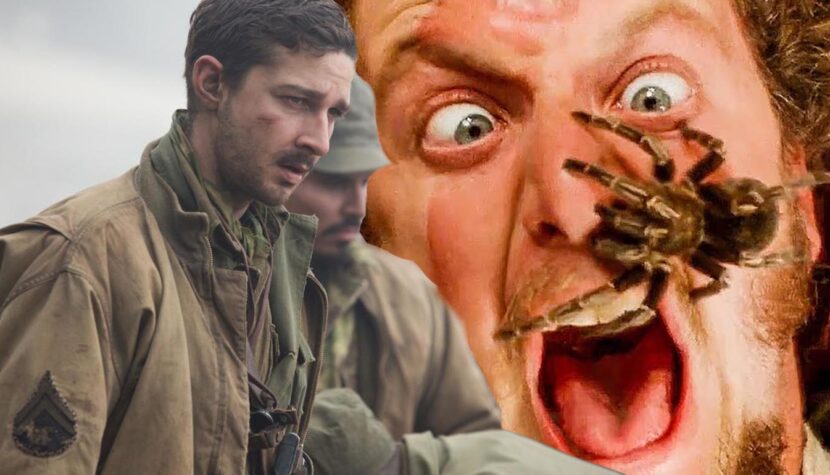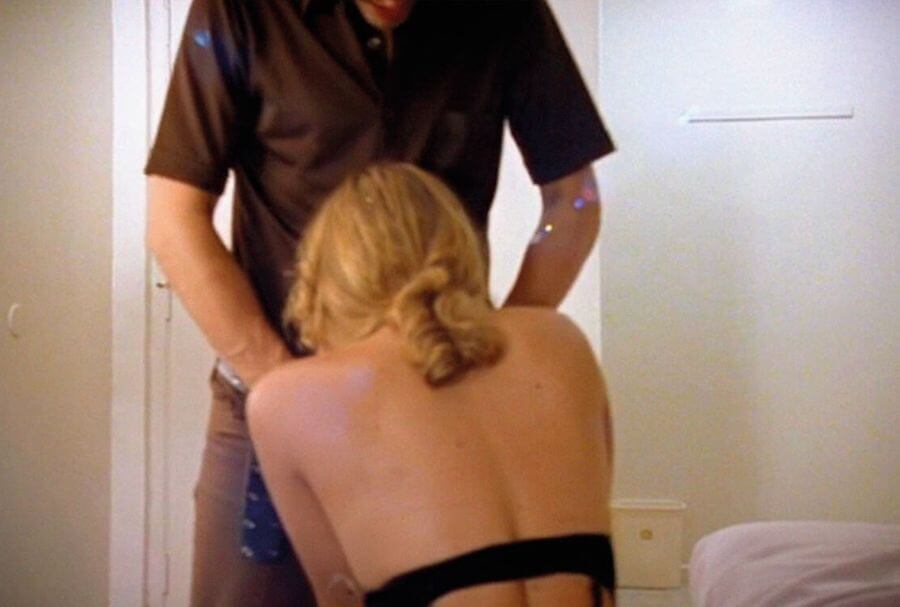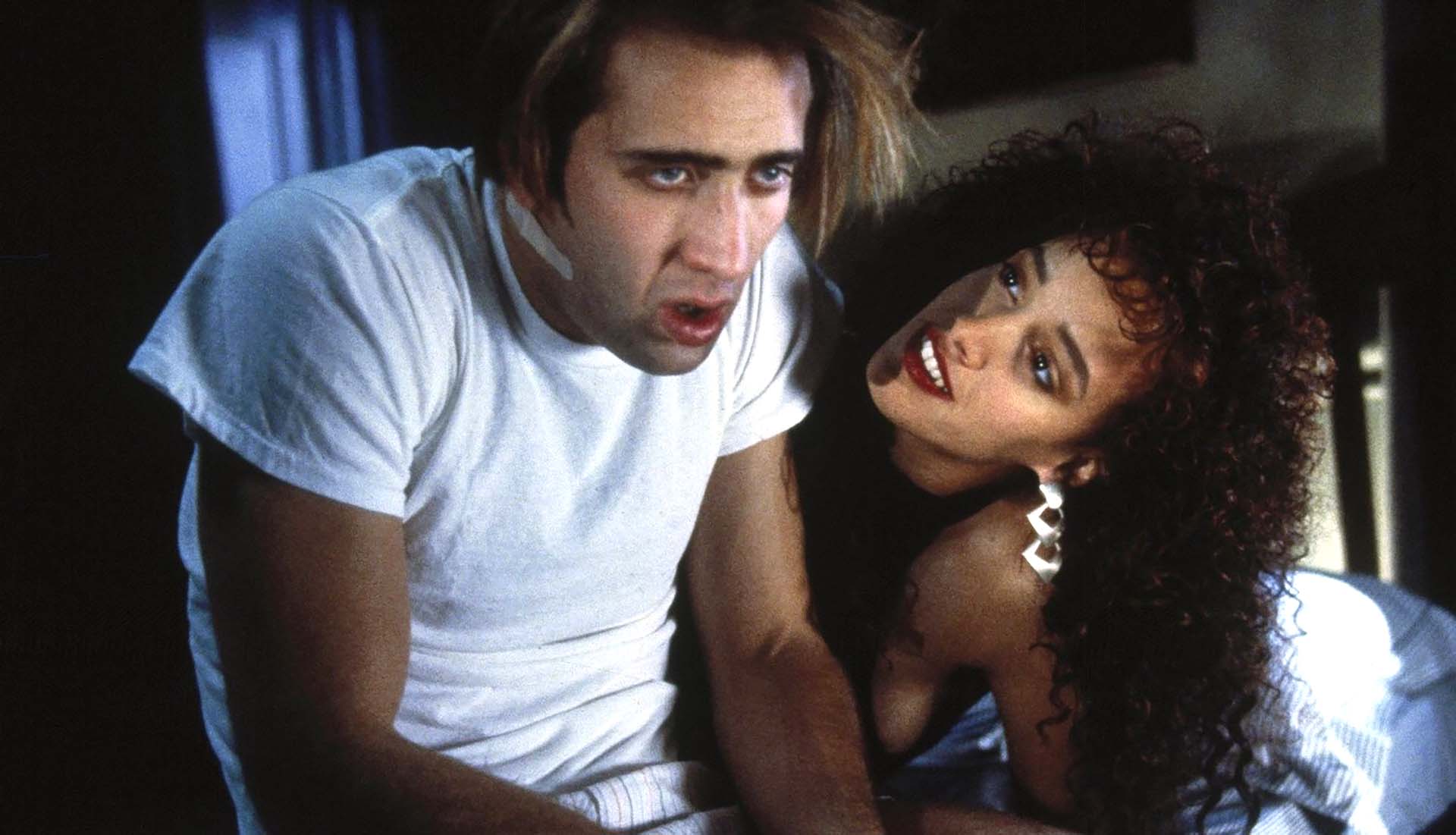The Most Disgusting Things Actors Had To Do For Movies

I’m not referring to weight loss for a role, although Christian Bale is a master at that. However, there are more drastic examples of what actors decided to do for roles, either on set or off, to avoid losing roles and to make their characters look authentic. Sometimes, this crazy immersion into characters involved harming other living beings. So one might wonder if such sacrifice is really necessary for filmmakers, and even more so: is it necessary for viewers to consider a particular film worth watching? The answer seems obvious, especially in an age of advanced special effects, which can construct scenes so convincingly that no one can tell where reality begins and ends.
Min-sik Choi eats a live octopus – Oldboy, 2003, dir. by Chan-Wook Park

This is indeed an example of such a scene where an animal is killed – and it’s not entirely clear why. It’s unnecessary realism, adding nothing valuable to the story. One of the most famous scenes in Oldboy features Choi Min-sik entering a sushi restaurant and ordering a live octopus. He then grabs the live creature in his hands, bites off its head with his teeth, and stuffs the rest of the writhing animal into his mouth. Watching this scene can literally make you feel sick. Killing in this way is disgusting. Moreover, the actor had to eat four octopuses in this manner. He felt guilt, though. He refused Buddhist prayers for each killed animal.
Daniel Stern and the tarantula – Home Alone, 1990, dir. by Chris Columbus

I have to agree; the tarantula scene never sat well with me either. Nowadays, it could all be done with CGI. Back then, that option wasn’t available. The scene with Daniel Stern, when Kevin places the tarantula on his face, comes to mind. Spiders are delicate creatures, and such “stunts” are dangerous for them, especially considering their legs are equipped with numerous tiny hooks. It’s quite an interesting sensation to feel those legs on your skin as they gently embed themselves. When handling such a spider, one must be careful not to accidentally tear off one of its legs attached to the skin’s surface, so it’s better for these animals not to participate in such scenes. In the case with Daniel Stern, not only was the tarantula real, but also Stern’s screams when he realized he had a real, venomous spider on his face. As far as I know, spiders cannot be surgically modified to remove their venom glands – at least I haven’t heard of such a procedure. Removing them would mean death for the animal.
Asbestos snow – The Wizard of Oz, 1939, dir. by King Vidor, Mervyn LeRoy

Absolutely, from today’s perspective, the scene is indeed disgusting, considering what we now know about the effects of certain forms of silicate minerals, commonly known as asbestos, on living organisms. Once, they were a common component of Christmas decorations, especially artificial snow. So, asbestos-based artificial snow appeared on the set of The Wizard of Oz. Dorothy and her friends fall asleep in the poppy field and wake up when it starts snowing. The snow in the scene is actually asbestos. It sends shivers down our spines today, and we feel disgusted that the actors could willingly participate in something so carcinogenic. Of course, they didn’t know that tiny asbestos fibers were settling in their lungs, embedding themselves in the tissue, remaining there for years and causing diseases like mesothelioma. However, it’s worth noting that by the late 1930s, actors and the film crew should have been aware of the harmful effects of asbestos – if not the actors, then certainly the film crew.
Christian Bale and worms – Rescue Dawn, 2006, dir. by Werner Herzog

It was a historic opportunity for Christian Bale – collaborating with a director of such caliber, known for his controversial ideas. Bale portrayed Dieter Dengler, a prisoner of war who managed to escape from a camp into the Vietnamese jungle. Because of this historical chance, Bale decided to do everything to make the film authentic. He found himself on fertile ground. Herzog agreed. Thus, realism relied on both Bale’s stunts and realistic acting in another way. Bale ate live worms for a scene. That was the reality back then. Since prisoners weren’t provided with much food, worms were the only available option. Instead of using special effects, Herzog asked Bale to truly eat the worms. Interestingly, before shooting the scene, Herzog ate the worms himself. He demonstrated that performing this sequence was feasible and not as difficult as it may seem. I’ve eaten them; I don’t recommend it if there are alternative protein sources available.
Bathing with corpses – Poltergeist, 1982, dir. by Tobe Hooper

When I read about this story, it reminded me of Gunther von Hagens‘ plastination controversy. There was a big uproar when it was reported that he allegedly purchased bodies of prisoners executed in China, as well as those of other individuals inconvenient for certain regimes, like Zhang Weijie, the disappeared mistress of Bo Xilai, a former high-ranking Chinese official. What connects them? The death market, where human bodies are traded, and you can even buy them “at cost.” Now, back to the scene from Poltergeist, featuring JoBeth Williams. It takes place in a muddy pit dug for a pool construction. When water fills the pit, skeletons start surfacing from the bottom, real ones, which JoBeth Williams only found out about years later. Nevertheless, it’s a disgusting scene, even if you know the skeletons are fake. However, they were indeed real, reportedly imported from India, where – as we know – there is weak control over criminal activities related to cadavers, organs, and even trafficking. Hence the association with von Hagens’ plastination.
Bison liver – The Revenant, 2015, dir. by Alejandro González Iñárritu

Worth is to carefully analyze Leonardo DiCaprio’s words about eating the bison liver in The Revenant and why it’s not an easy task. And then, based on those words, try to imagine what the actor felt when putting that raw meat into his mouth. So here it is: “The membrane around it [the liver] was the worst. It’s like a balloon. When you bite into it, it bursts in your mouth. And probably at that moment, more blood comes out.” The actor vividly described his experience with eating raw meat. Apparently, he could have eaten a liver made of gelatin. After assessing how it looked, however, he concluded that it wouldn’t provide the scene with the required dose of realism. Therefore, he opted for a real organ.
Shia LaBeouf’s teeth – Fury, 2014, dir. by David Ayer

Fury is an extraordinary film due to its realism. Not all viewers appreciated such a vision of war. It’s worth learning about how the actors prepared for their roles and what they experienced on set. Perhaps then we’ll understand how exhausting it was, how much it cost them, and why it resulted in such an effect. Shia LaBeouf is an emblematic example, not only because of the tooth he pulled out for the film, but also because of a kind of facial scarification, temporary of course, but sustained. Shia made sure that the wound on his face wouldn’t heal. So, he regularly inflicted injuries on himself to bleed intensely. He also tortured himself with scenes involving dying horses to get into the mood of death and stopped washing himself.
Nicolas Cage’s teeth – Birdy, 1984, dir. by Alan Parker

I know cases where people are so afraid of injections that they refuse anesthesia, especially at the dentist’s, regardless of how much the procedure will hurt. However, I don’t understand this particular case, although it may just be a rumor. As part of his preparation for the role in the film Birdy, Nicolas Cage reportedly had several teeth removed. But why did he do it without anesthesia? Perhaps he wanted to feel the pain of his character, severely wounded during the Vietnam War? It’s a good thing it was only teeth, and Cage was still fiercely trying to establish himself as a star at that time. Pain indeed can be liberating, but it would have made more sense to knock out teeth on set rather than remove them in, let’s say, laboratory conditions.
O**l s** scene with Chloë Sevigny – The Brown Bunny, 2003, dir. by Vincent Gallo

Now I might sound controversial, because this scene didn’t necessarily have to be disgusting for the actress. It depends on her, the actor, the situation, and many other factors. Nevertheless, for most people, it will probably be disgusting, but it’s simply naturalistic. Such scenes are rarely seen in cinema. Interestingly, the actress defended this scene when she faced criticism from more prudish viewers and critics. I’ve watched it several times. Objectively evaluating it, however, it’s weakly filmed, poorly engaging, and not very sensual, etc. Much better scenes are shot by amateur users with individual accounts on Pornhub.
Nicolas Cage and the cockroach – Vampire’s Kiss, 1988, dir. by Robert Bierman

Cockroaches are popular among actors, as well as participants in various TV shows. In the late 80s, Cage once again wanted to prove that he was mentally strong and committed as an actor. Eating a cockroach is indeed a feat. And to think that originally, the actor was supposed to suck a raw egg. However, the egg turned out to be too weak, not very impressive, not very disgusting. And for Cage, apparently, the cockroach was like that famous Room 101 from “1984,” so the actor who decides to overcome his weaknesses decided to eat it. Cage described the situation like this: “This is terrific! I sent my prop people down into the boiler room. They brought me a box, divided up into little sections with tissue paper. The cockroaches were there lined up for me to cast. I think they’re actually called water bugs – they’re bigger than cockroaches.” Moreover, Cage made two attempts. He put the cockroaches into his mouth, chewed and swallowed them, and then drank vodka to kill any potential germs.

